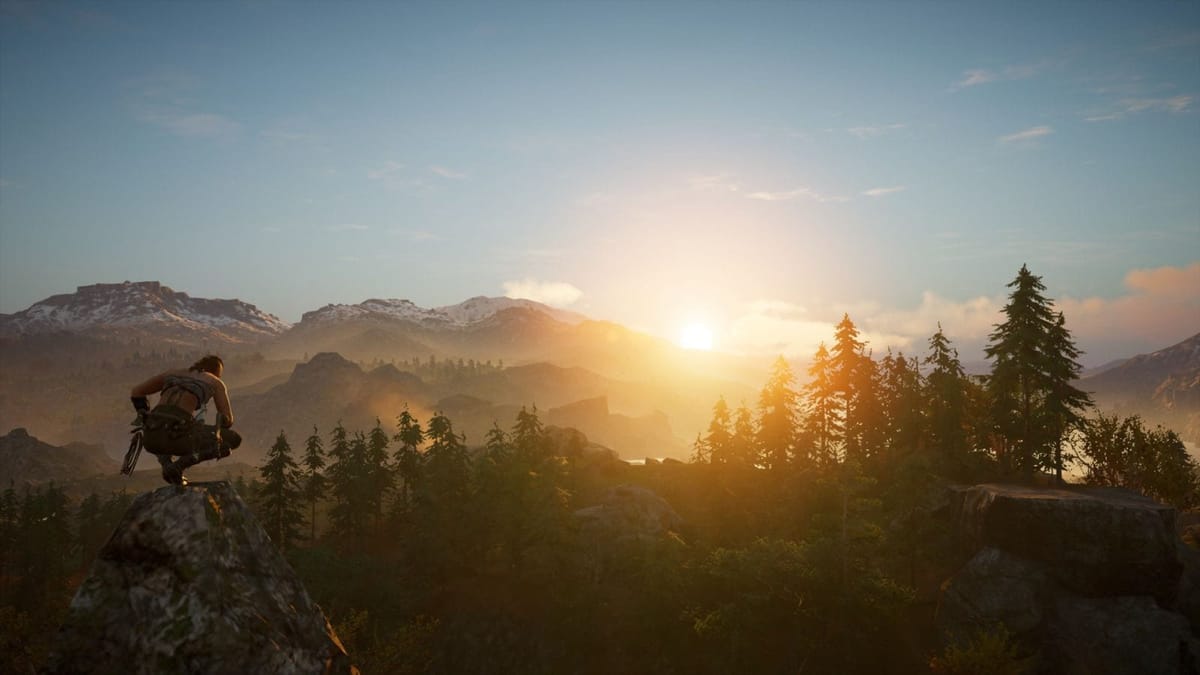
The reign of kings has come to Norway. The Jarls of the land have all decided to place their fealty in the hands of one man. This causes a split in the Raven Clan, with some accepting the new rule while most follow their former prince to greener pastures: England. After establishing their small settlement of Ravensthorp, they seek to establish peaceful relationships across the four kingdoms, whether that means installing their own kings or just helping their new neighbors with their troubles.
In Assassin’s Creed Valhalla you are put into the soft calfskin boots of Eivor, a Viking warrior-poet who helps lead the charge into England for the Raven Clan. You’ll choose whether Eivor is male, female, or you can let the Animus decide. Surprisingly, this selection is not permanent, allowing the player to switch to the other DNA stream at any point, letting the Animus decide will even swap at some moments automatically. You can customize your Viking aesthetic from your gender all the way down to Eivor’s hairstyle and tattoos. Customization is a bit of a theme in Valhalla.
Storylines in Assassin’s Creed Valhalla take a very different approach than its predecessors. There is a central thread that runs throughout, but stories are more told in a saga format. Vikings would frequently sit down and tell exaggerated stories about how they once bumped into Odin in battle, or how one time Freya came to them in their bed. These roll out as more individual storylines with a beginning, middle, and end, letting you experience the game in chunks. It’s a bit like playing several, bite-sized RPGs in one. At the center of all these arcs sits Ravensthorp – your settlement. The last step of every single quest chain will have you return here, and you can use your spoils to build new facilities, homes, and even decorate the town as you like. This is also the only place you can change up your look and upgrade your gear, and it always feels good to come home, giving the game a more unified feel than Origins or Odyssey.
You can tackle these arcs in just about any order you wish, though you will probably save the more difficult areas for later on in the game. There is a ton of freedom in progression here. After the opening hours in Norway, you can essentially go anywhere and do anything you want. I generally tried to keep myself on track for the main story to finish in time for this review, and the emphasis is definitely on “tried”. Sailing my longship through England’s rivers would frequently be interrupted by seeing something or someone just off the riverbank I wanted to check out, and all of these distractions are well worth your time not only for the rewards but also simply for the fun of them. While the main plot takes itself mostly seriously, the side quests are anything but. You can help an old woman find some eggs so she can pollute the city with her rancid farts, assist some nuns in beating up bandits, reassure a little girl that her father will return before the last leaf on her tree falls, and then shoot said leaf to the ground. And all of what I just described is in the first area. There is so. Much. Content. In this game to discover and you can do it on whatever platform you like. Ron Burke was playing the game on his PC, only to discover that once installed on his Xbox Series X his save was readily available to be continued.
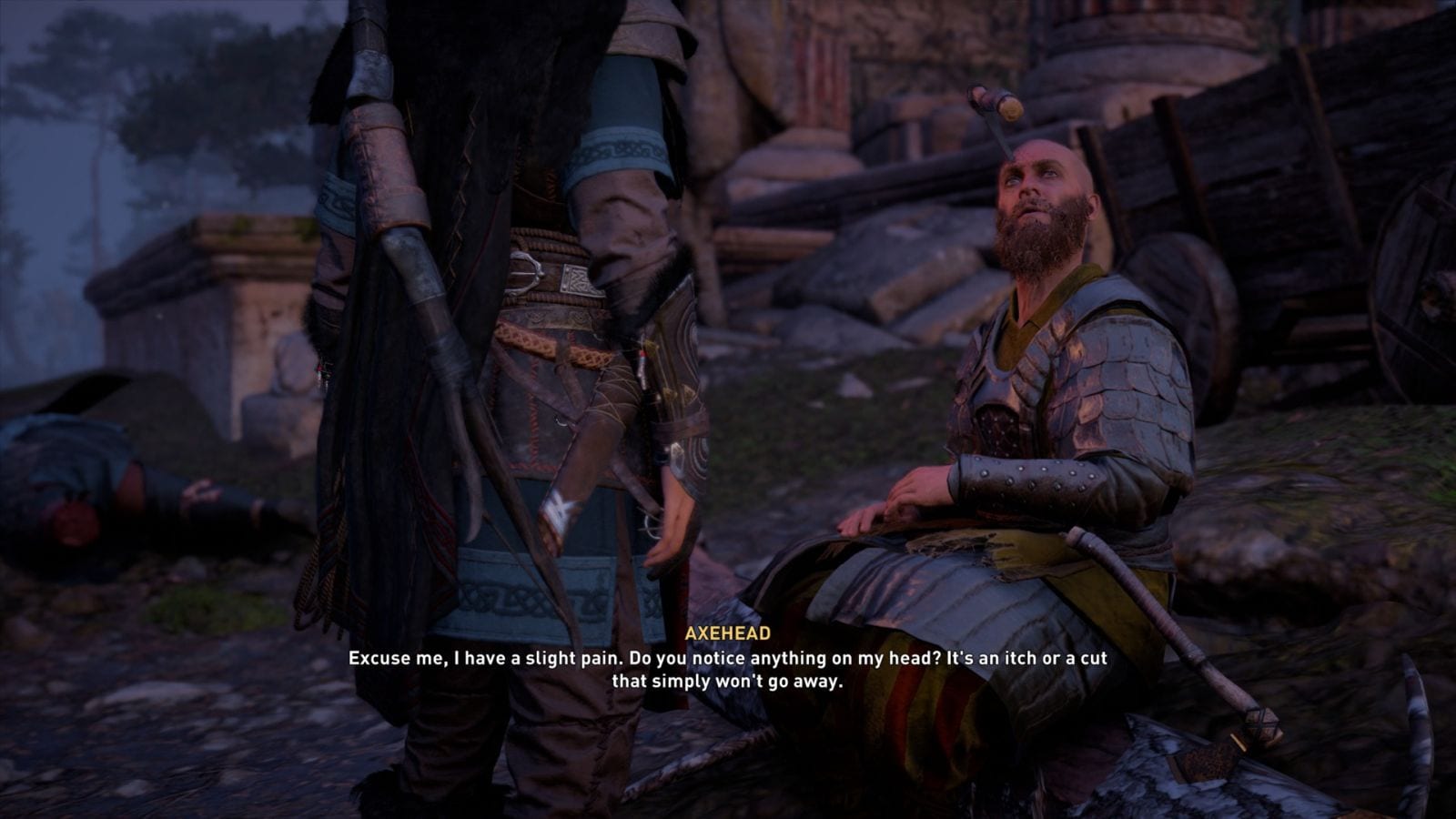
One of the things I enjoyed most about Valhalla is that it doesn’t feel like I’ve visited a Goodwill for weapons every time I hit a new town. Instead, and much like the way real-world Vikings would, you maintain and upgrade weapons. Deciding your fighting style is less about numbers and more about how an axe and shield feels in your hands. Danish long axes, spears, daggers, and even dual-wielding shields are all not only possible, but viable. Much of this comes from the way that skills are doled out. Each level you simply gain 2 points to allocate in the Final Fantasy X sphere grid-like skill tree. You begin in the center of three trees, each aligned with the Raven, Bear, and Wolf much like gear, and work your way out by purchasing stat upgrades or abilities.
Vikings look to the stars for their guidance, so it’s no surprise that it’s where they draw their power. As you level up you are given two skill points to allocate. Looking skyward, you’ll see familiar constellations with each point unlocking stat improvements and core skills like being able to stomp a downed opponent, or chain assassinate foes in stealth. Beyond the skills that descend from the stars, you’ll want to seek out Books of Knowledge. Solving challenging puzzles you’ll find books that contain the skills that are mapped to your face buttons. Examples of these powers are throwing a barrage of axes, charging into a foe and beating them senseless on the ground, or my personal favorite throwing a grappling hook in them and jerking them into walls or their comrades. Not all of the abilities meshed well with my playstyle, but those that did were extremely satisfying to use.
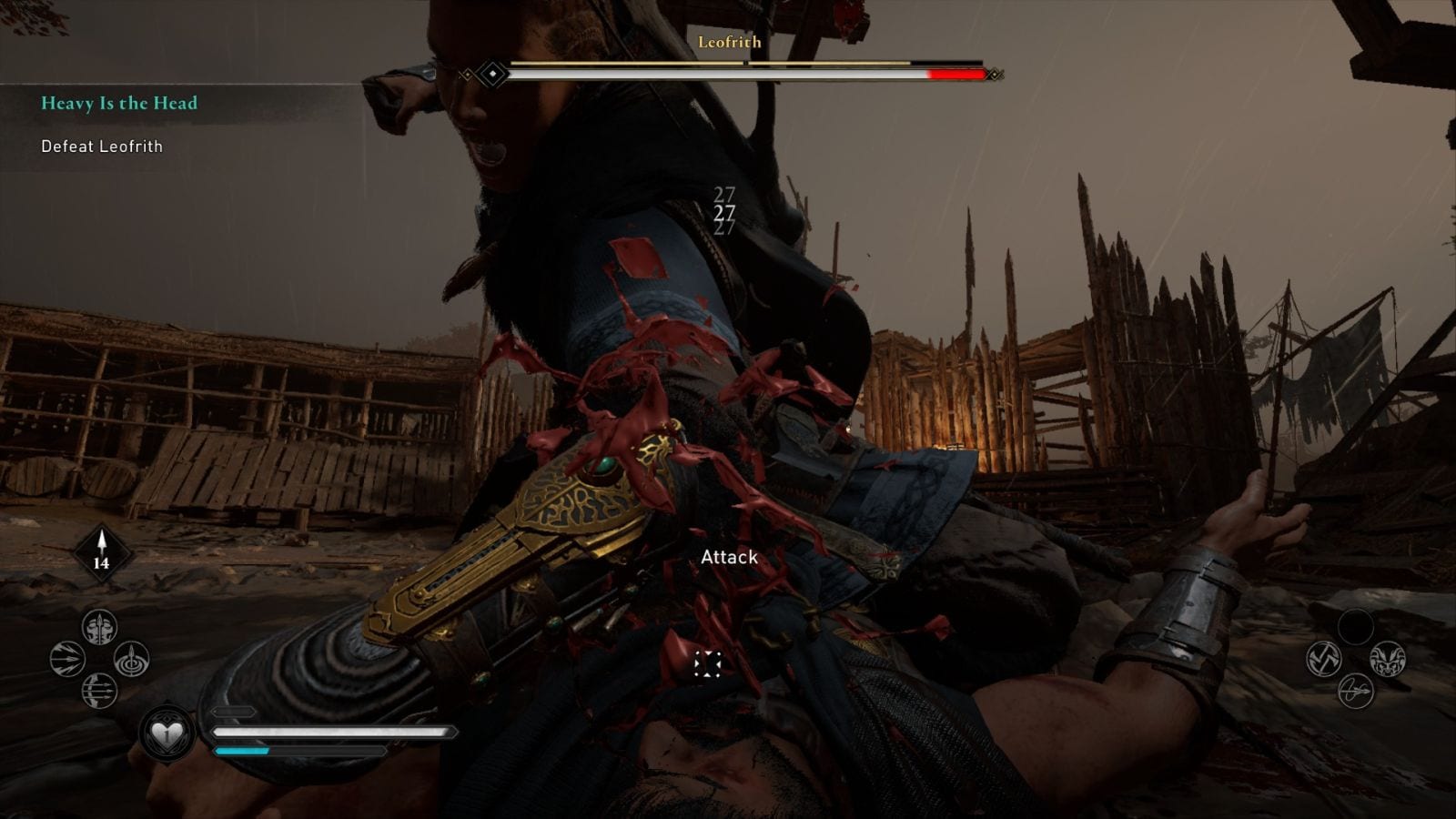
Taking these skills into the field showcases the absolute brutality that Vikings brought to the battlefield. Finishers ravage your opponents, beheading them, smashing their head between two hammers, or stomping their skull into bits, just to name a few. Odyssey had solid combat, but it’s clear that the team has worked hard to tighten this system up, while adding a few new tricks to make it fresh. When targeting enemies with ranged weapons you’ll spot glowing red or yellow weak points that can be used to turn the tide. Pinning a well-armored foe to the ground with a well-placed arrow lets you rush in for a brutal critical (and often fatal) attack.
Combat overall feels more weighty and precise, while keeping you on the offensive. Your ability to attack, parry, and dodge are all governed by the stamina meter – run out and certain actions will be much slower or impossible. However, landing a light attack will replenish a portion of your stamina meter, so you may want to break your opponent’s shield with a string of heavy attacks, finish them off with light attacks, then use the adrenaline gained from that to take out another in one shot.
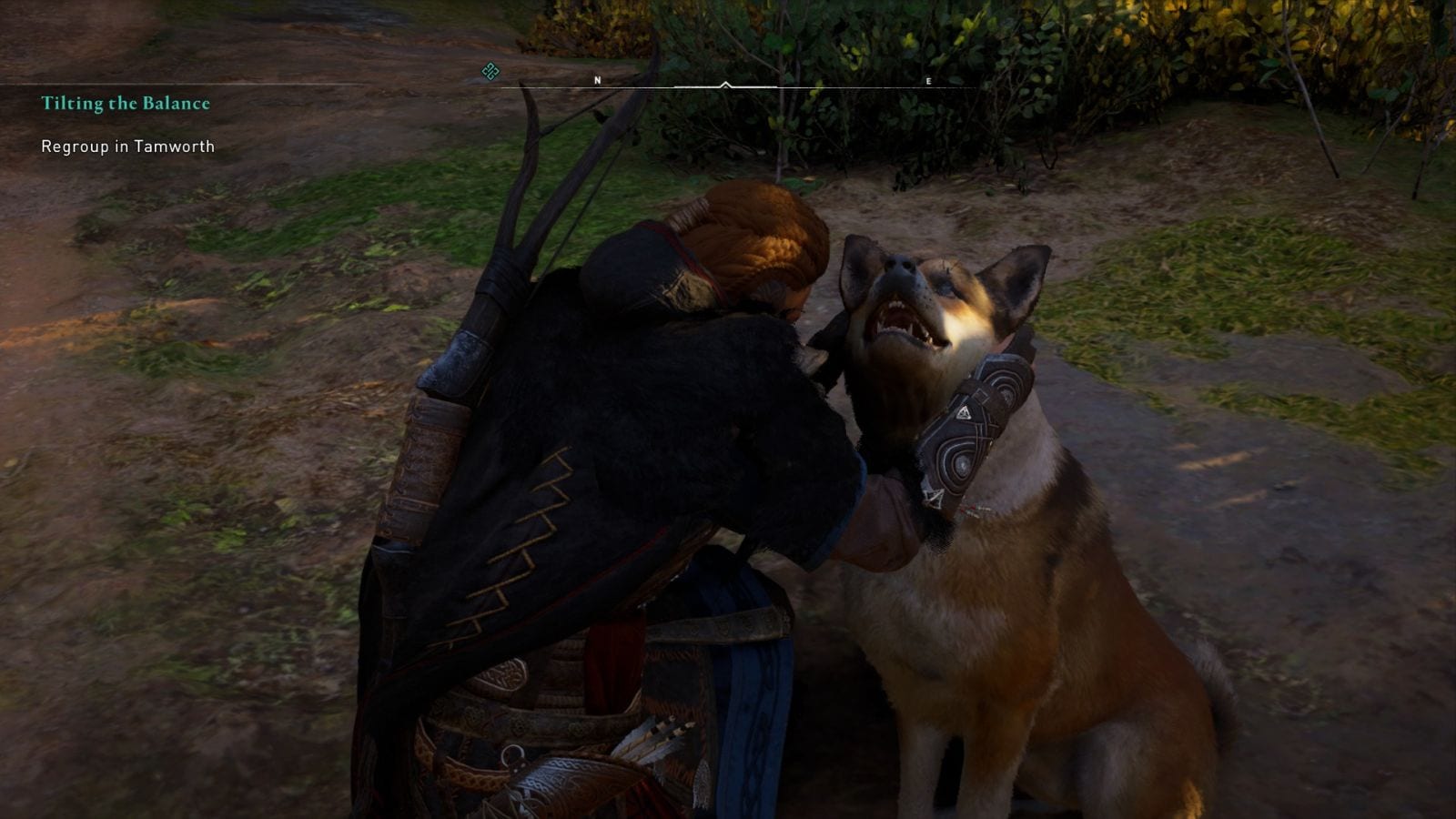
Your choice of weaponry will greatly affect your combat abilities as well, you can go for the traditional axe in one hand and shield in another or using a larger, two handed weapon, but I found the most fun in dual wielding. We’ve already mentioned you can use two shields, but you can also take axes, flails, or hammers in hand(s). Using two of the same weapon type is ideal, since you can make use of both in every swing, but you can put whatever you want in whatever hand you want as well, later on there’s even a skill to allow dual wielding two handed weapons. The weapon in your main hand will determine your basic combos, while what’s in your off hand will let you perform a secondary attack by holding the left bumper. It’s a lot of fun to experiment with weapons, until you realize that the penalty for using two different weapons is just too great. I’ve stuck with dual axes for most of my playthrough, but as of writing I’ve yet to find a second flail or hammer to maximize those playstyles.
Vikings (which in a historical context is actually what the people did, not what they were called) have a reputation as being fierce warriors who destroyed everything in their path, but there’s more to their story than that. Many just wanted to carve out their own slice of life. That said, they tended to carve that slice out of the neighbors. Raiding churches for their silver and artifacts yielded the supplies needed to firmly plant their feet. Assassin’s Creed Valhalla embraces raiding completely, allowing you to sail up to any settlement and initiate an attack on it to liberate their precious goods. Hauling back these supplies lets you upgrade the settlement, attracting more settlers and building opportunities. Carving your own place in the world makes the whole thing feel more alive.
The gigantic open worlds you’ll be exploring likewise feel very alive. Whether you travel the Swan Roads, the regular roads, or off the beaten path every inch of Valhalla is teeming with life and secrets to find. Your compass at the top of the screen is your guide to points of interest in the world, and the specificity of the information is determined by your exploration difficulty. Combat, Exploration, and Stealth difficulties can all be adjusted separately. Combat and Stealth are self explanatory, but different exploration difficulties will allow you to see things on the compass such as a marker’s distance or automatically marking the nearest undiscovered location. I went with the hardest option for each of these, and I would recommend you at least pick the hardest for Exploration, called Pathfinder. The world is just so vibrant that I feel you would be selling the experience short on anything less.
There are innumerable side activities in Assassin’s Creed Valhalla. Competing against other Vikings in mead drinking challenges, playing an ancient board game called Orlog, or going fishing because every good RPG needs to have a finishing minigame. The best thing, however, is “Flying”. Flyting is the act of using wordplay to attack your opponent using a rap battle-esque call and response. If you’ve played a Monkey Island game, you know exactly what to expect.
This is tied directly to a new stat to build — charisma. In some conversations, you can choose to turn on the charm to bring someone to your way of thinking if your charisma stat is high enough. For example, early on you need to bribe a fellow Dane for information, but with your charisma at level 2 you can negotiate down to half of what you would have paid otherwise. So not only is flyting a ton of fun (and a good way to earn silver besides) it’s extremely useful if you want to save time or money or even avoid bloodshed.
If you would rather engage in selective bloodshed with, say, a small blade attached to the forearm, stealth is almost always an option. Skulking around in shrubbery is the same as always, but actually doing the dirty deed has been improved greatly. Previously, enemies you couldn’t assassinate in one shot would still give you a big critical hit, but now there’s a small quick time event which does allow you to instantly kill them and remain in stealth. As someone who prefers this approach, this is an absolute godsend, finally allowing me to pick off entire enemy camps or even fortresses, then calling in my raiders to finish the job.
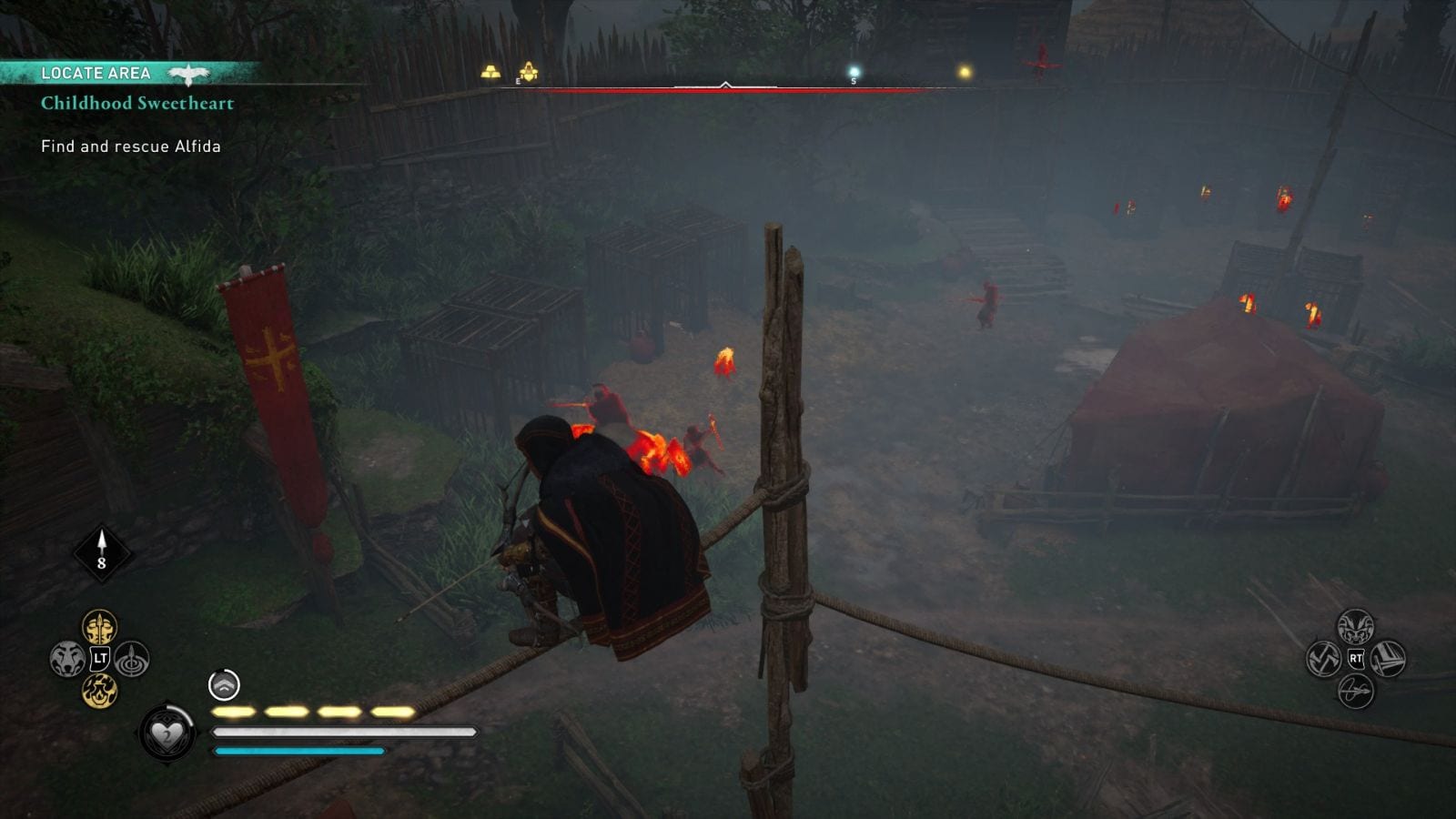
The most interesting addition to stealth isn’t something you do, but rather places you go. As a Dane in England, there are several locations where people already distrust you aptly named Distrust Areas. In these zones you’ll quickly be attacked for suspicious activity of any kind such as walking too fast, so you need to keep your hood up, blend into crowds, or stick to rooftops if you don’t want the entire city guard coming after you. You can no longer mark enemies with your bird either, only using the pulse-like Odin Sight to make them visible through walls at a close range, so stealth overall is more involved and, as a result, more interesting.
While I don’t want to spoil any of the story, there are some interesting choices to make along the way, it for the most part avoids the frankly uninteresting overarching story of the series. I was only taken out of the Animus once to reintroduce Layla and the gang, and never again until the credits rolled. Personally, I’m not invested in the Assassins and Templar conflict anymore, and even when I was it was mostly in passing interest, and I wouldn’t mind if they just dropped the modern day storyline entirely. The gimmick has worn out its welcome, and I’m glad the developers have been focusing more on what they do best and seem to be more interested in – creating a fun, fictionalized version of history to run around in. I really appreciate both the accuracies and intentional inaccuracies here, like women actually having agency and being prominent characters instead of… well, real history. While I haven’t found any major queer characters, Eivor themselves can be queer in certain ways. As previously mentioned, you can change their gender between male or female at will, but you can also romance a few characters as well regardless of your gender. Personally, I like to think of my Eivor as an asexual trans woman who’s more interested in hitting things with her axes than kissing. It’s great that you’re given this amount of freedom, but more can always be done to accommodate even more people. For example, fashion slots for gear (including lower tier versions, which are lost upon upgrading) or, dare I ask, a non-binary option. Still, as it is, Valhalla goes above and beyond to make sure all types of players can enjoy themselves.
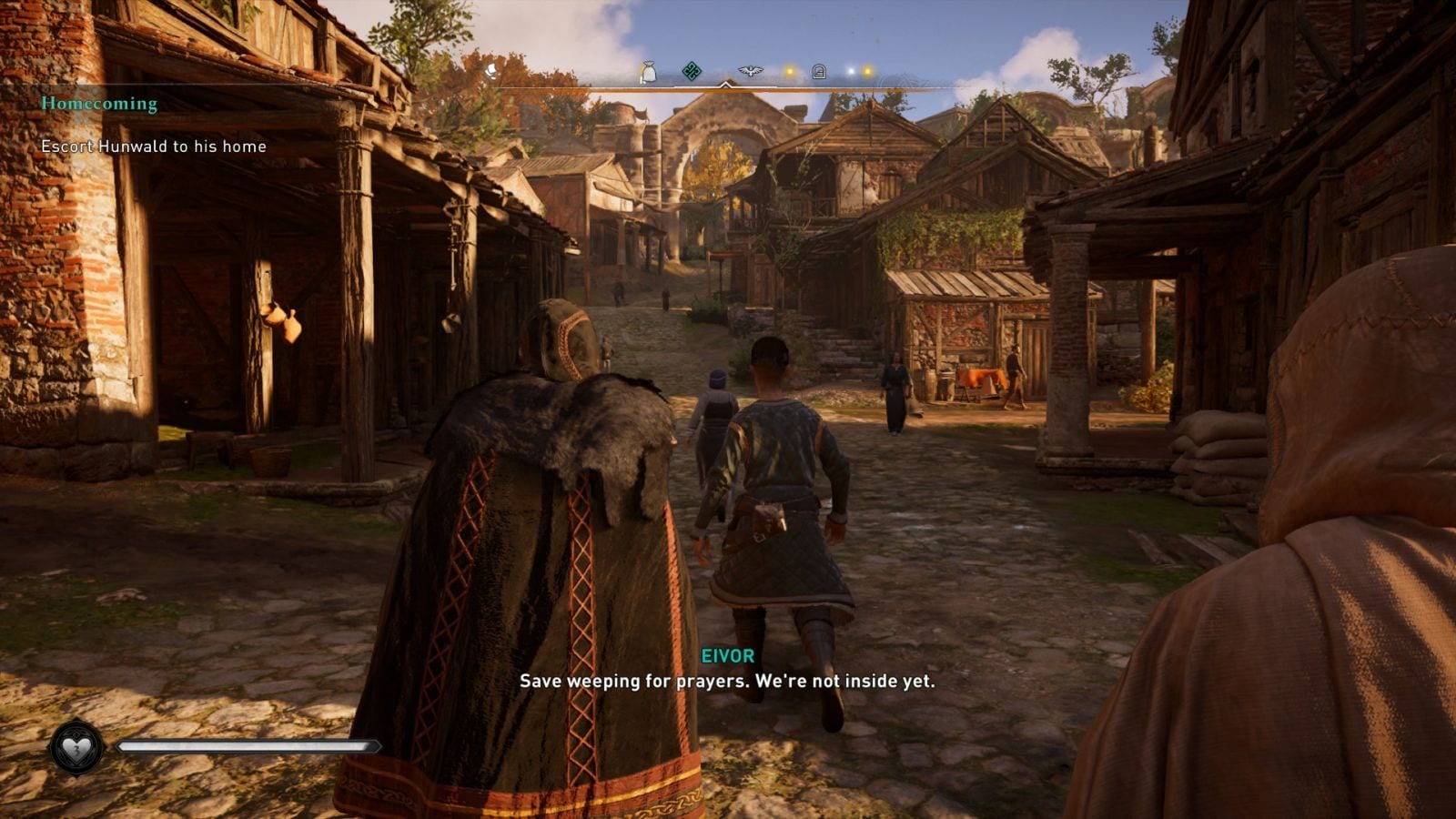
As always, there are a wealth of accessibility options available. You can rebind every single action on both keyboard and gamepad, for example I chose to rebind the Stomp attack to X instead of R3. You can invert all kinds of axes, turn off blood and/or nudity, adjust the intensity of vibration, and change the size of every element of the interface, from icons to text. You can even turn on a text to speech function or enable a noise when Eivor walks into a wall. I am a sighted individual, so I don’t know exactly how useful options like these are, but I do know that hard of sight players are often not thought of at all in game development and it’s nice to see these considerations taken.
I am lucky enough to be able to clearly see and hear the world of ACV, and it is drop dead gorgeous, even on low settings with my aging GTX 970. You can see the pretty for yourself in our 4K footage (thanks Ron!) and I would highly recommend headphones to experience the detailed soundscape of England. The music, while I wouldn’t listen to it on my own outside of the game, set the mood extremely well whether you’re exploring the rolling hills of Grantebridgescire or raiding a monastery with your crew. The sound effects are likewise incredible and help immersion immensely, nothing gets me into a game like various boots on floorboards sound effects, weirdly enough.

Unfortunately, Valhalla isn’t perfect. While the game runs surprisingly well on my old graphics card, apart from frame rate dips in populated areas like Lunden, I frequently encountered strange clipping issues where Eivor would become one with a pillar I was pushing or shafts of light flickering through solid walls. The biggest technical issue is the game’s horrendous pathing, the follow road option would sometimes take me in the direction opposite of my tracked quest and quest important NPCs would get stuck on walls or just stand in one place. I’ve also encountered about three crashes to desktop, all in the late game. Most of these can be fixed simply by reloading the game, and thankfully it saves frequently so I only ever lost a minute of progress at most. Hopefully these can be ironed out in future patches, but what won’t be ironed out is the cash shop, where you can purchase armor, mounts, and even items to skip content like exploration for real world cash. This feature still feels gross and manipulative as it has in the previous games, but it’s easily ignored apart from an advertisement on the main menu. Don’t support these practices and hopefully it’ll go away.
Assassin's Creed Valhalla
Phenominal
Assassin’s Creed Valhalla is the best open world RPG this year. It’s colorful locals are a joy to discover, combat and stealth feel deep and rewarding, and there’s a viking hoard of things to do.
Pros
- Huge, beautiful open worlds
- Combat and stealth are equally intricate
- Minigames like flyting are a ton of fun
- Immersive soundscape
- Tons of accessibility options
Cons
- A bit of jank
- Cash shop
